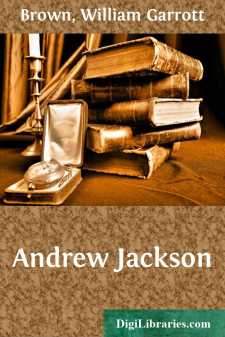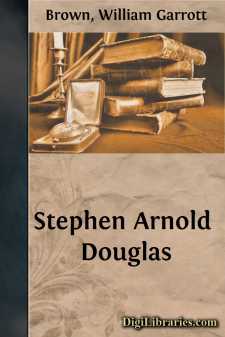Categories
- Antiques & Collectibles 13
- Architecture 36
- Art 48
- Bibles 22
- Biography & Autobiography 813
- Body, Mind & Spirit 142
- Business & Economics 28
- Children's Books 15
- Children's Fiction 12
- Computers 4
- Cooking 94
- Crafts & Hobbies 4
- Drama 346
- Education 46
- Family & Relationships 57
- Fiction 11828
- Games 19
- Gardening 17
- Health & Fitness 34
- History 1377
- House & Home 1
- Humor 147
- Juvenile Fiction 1873
- Juvenile Nonfiction 202
- Language Arts & Disciplines 88
- Law 16
- Literary Collections 686
- Literary Criticism 179
- Mathematics 13
- Medical 41
- Music 40
- Nature 179
- Non-Classifiable 1768
- Performing Arts 7
- Periodicals 1453
- Philosophy 64
- Photography 2
- Poetry 896
- Political Science 203
- Psychology 42
- Reference 154
- Religion 513
- Science 126
- Self-Help 84
- Social Science 81
- Sports & Recreation 34
- Study Aids 3
- Technology & Engineering 59
- Transportation 23
- Travel 463
- True Crime 29
Andrew Jackson
Description:
Excerpt
THE WAXHAWS AND THE WILDERNESS
In Lafayette Square, which fronts the White House at Washington, there is an equestrian statue of a very thin, long-headed old man whose most striking physical characteristics are the firm chin and lips and the bristling, upright hair. The piece is not a great work of art, but it gives one a strong impression of determination, if not of pugnacity. Sculptors have not the means to represent the human eye, else this impression might have been made stronger; for the old gentleman whose warlike aspect is here reproduced had a glance like a hawk's. He had, moreover, a habit of gazing fixedly at any one who attracted his attention. When he was angry, as he was quite frequently, few men could meet his look with composure. When he was in good humor, however, as he usually was when he dealt with his friends, or with women or children, his eyes could be very kindly, and his grim lips could part in a smile that was extremely attractive.
Not far away is the Treasury building. Were the horseman alive, by merely turning his head he could see its outline through the trees. There is a tradition in Washington that when this old man lived in the White House, and Congress voted to erect a new Treasury building, the old one being burned, there was some question of the exact spot on which it should stand. The question was put to him when he happened to be walking near the western end of Pennsylvania Avenue. He struck his cane on the ground and said shortly, "Put it here, sir,"—and there it stands. Whether or not the story is true, it is characteristic of the man and in keeping with the history of his times; for when Andrew Jackson was President most things were done at Washington just as he ordered them to be done. His friends declared that this was so because in most things his will stood for the will of the American people; his enemies, that they were done for no good reason whatever, but only because a despot commanded his slaves to do them.
To this day there is the same division of opinion. The historians still fight the same battle over him and his doings which in former times was fought out by famous orators in Congress, by the whole people at the polls. It is doubtful, indeed, if there ever will be, until the end of the Republic itself, an end of the dispute over the place which that slender figure with the bristling hair ought to have in American history. Had Andrew Jackson any good claim to statues and monuments, to the first place in the Republic, to popularity such as no other man had enjoyed since Washington, to power such as Washington himself had never exercised? Did he prove himself worthy of the place and power he held? To answer either yes or no with assurance one must patiently examine more books than Andrew Jackson ever glanced through in his whole life. This little book would hardly contain the full titles of them all. Yet it may perhaps be large enough to let the reader see what manner of man he was concerning whom so many bitter controversies have raged....



